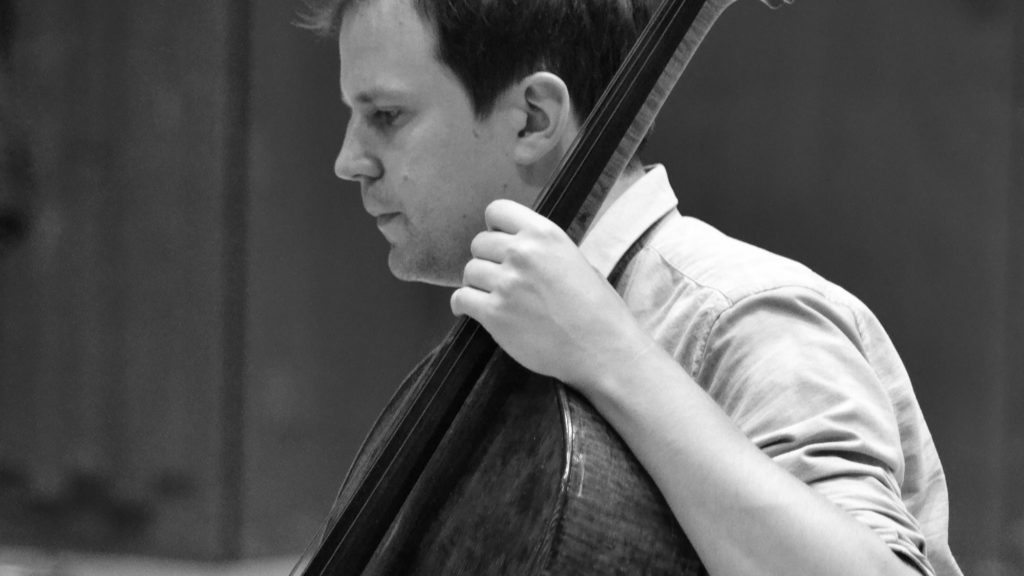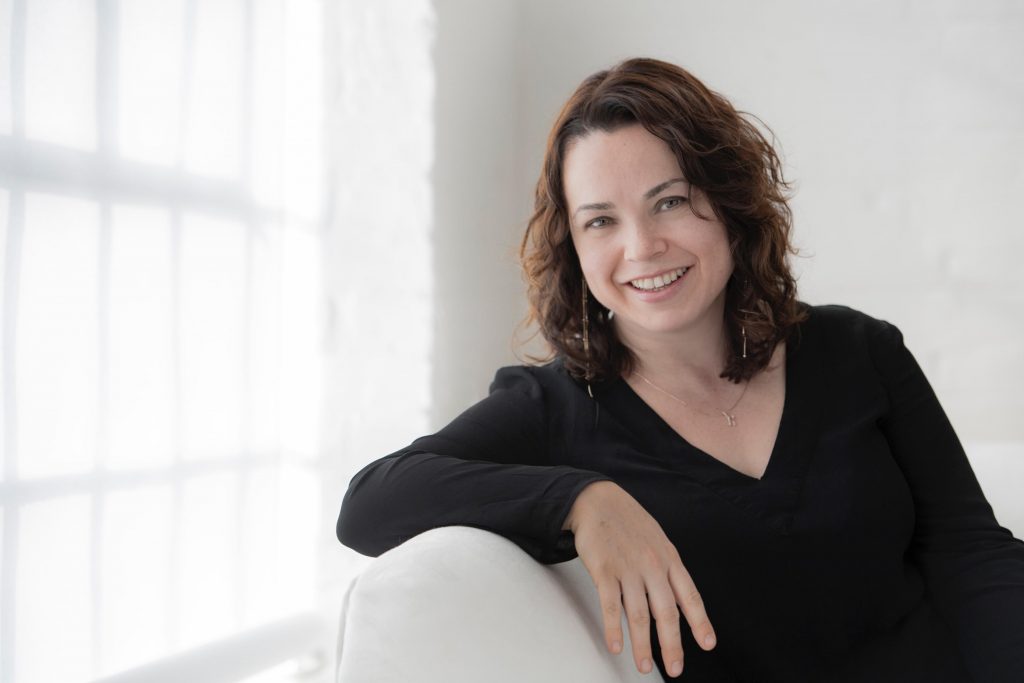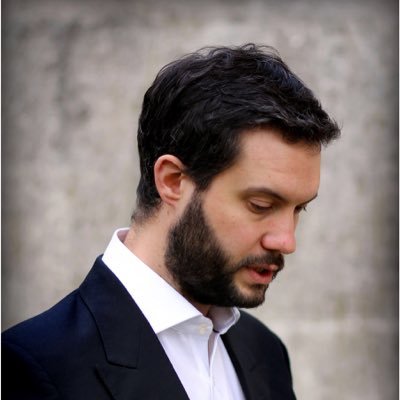
Tim Lowe and Katya Apekisheva, Unitarian Chapel, St Saviourgate, York, September 15
YORK Chamber Music Festival’s tenth anniversary season bounced into life with this lunchtime recital centred round Brahms’s First Cello Sonata. The remainder of the programme involved some Beethoven variations, a couple of Tchaikovsky bonbons and two Schumann movements originally intended for horn. But it was a pleasing taster nonetheless.
The first of Brahms’s two sonatas for cello and piano, in E minor, is a surprisingly mature work, given that it mostly dates from his late twenties and is his first chamber piece for two instruments.
Compared to most of his contemporaries he was a late developer. The first movement, in which the major key makes futile attempts to take over from the minor, relies heavily on the cello’s lower range. Here the balance between the players was, rarely in this recital, not quite right and a little more heft in the cello might have solved the problem. But there was no faulting Tim Lowe’s upper register, which sang with heartfelt joy.
There was a jaunty opening to the minuet and an engaging return to its resumption after the halting trio. Bach’s influence on the finale was plain to hear and the ebb and flow between the duo after the central unison was riveting, before a decidedly edgy coda.
Beethoven’s variations on Handel’s aria See, The Conquering Hero Comes – nowadays often sung as an Easter hymn – shows a remarkable affinity for the cello’s spectrum of colours, which Lowe amply demonstrated. As so often as an accompanist, Katya Apekisheva was quick to adapt her tone to the work’s chameleon moods.
Two Tchaikovsky pieces originally intended for piano solo revealed the composer’s talent for a long-breathed melody, particularly one in a minor key. He loved his C sharp minor Nocturne, Op 19 No 4 so much that he orchestrated it. Lowe was richly touching in the little cadenza at its heart. Even more soulful was the Valse Sentimentale (Op 51 No 6 in F minor) with its passionate undercurrents.
Schumann wrote his Adagio and Allegro, Op 70 for horn and piano but allowed a cellist friend to transcribe it. In this guise it sounds remarkably different. Lowe delivered a beautifully calm line in the Adagio, and the duo captured the Allegro’s rapture superbly, with its second theme ideally balanced by the piano, before full-blown excitement at its close.
Festival Strings, National Centre for Early Music, Walmgate, York, September 15
STRING quartets by Haydn and Mendelssohn preceded Richard Strauss’s Metamorphosen in its original form in this evening recital, which was the first at which all of the festival’s seven resident string players were present. Looked at another way, this was late Haydn, early Mendelssohn and late Strauss, a potent combination.
Jonathan Stone led the ensemble for Haydn’s Emperor quartet, Op 76 No 3 in C, backed by John Mills as second violin, Simone van der Giessen as viola and Jonathan Aasgaard as cello. There is always an element of hazard – part of the fun, if you like – when four independent souls, mainly used to solo work, link talents, particularly in a work by Haydn that requires the utmost precision.
That hazard is increased when they opt to play with very little vibrato, as here. That decision was odd given that this is a work of the late 1790s, with several toes, if not a whole foot, in the Romantic era. That may be the reason why this combo never quite settled.
Intonation was slightly awry in the nervous first movement and even the Emperor adagio (variations on Haydn’s hymn for the Kaiser, now the German national anthem) lacked real character, virtually vibrato-less.
The minuet was much more relaxed, even chirpy, with nice shading in its trio, but the finale was a touch too fast for its semiquavers to enjoy real clarity. The overall effect was intimate where we needed to hear more of Haydn’s heart on his sleeve.
Mills took over from Stone to lead Mendelssohn’s Second Quartet, Op 13 in A minor, with Hélène Clément as the new viola. Although only 30 years separate this piece from the Haydn, the players’ difference in approach was tangible.
Right from the start, there was a new commitment. After a rich opening Adagio, inner voices shone through commendably in the turbulent Allegro. After the slow movement’s central fugato, Mills’s little recitative to return to the opening was exquisite.
The central scherzo in the Intermezzo was light and delicate, returning to the movement’s opening with a delicate rallentando, before almost no break into the restless finale. Among so much incident here, the viola’s recall of the fugato theme was a pivotal moment, briefly changing the mood, before another outbreak of violence, stilled in its turn by the violin’s pacifying cadenza, supremely executed.
Thereafter, the recall of the very opening Adagio brought comfort and calm. It had been a passionate narrative, probably inspired by the teenage Mendelssohn’s unrequited infatuation at the time.
For nearly half a century, Strauss’s Metamorphosen was known only as a piece for 23 solo strings. Then the original version, for string septet with double bass foundation, came to light in 1990. It is writing of great intensity, which grew from a lament on the bombing of Munich in 1943.
The ensemble, led again by John Mills, brought great clarity to the score’s complex tapestry. From the dark opening on lower strings, its eventual emergence into major key territory brought a gradual quickening of rhythmic life, with all the players becoming as fervent as the ‘engine-room’ of violas.
When this had subsided back into grief, the cry of pain from the top three voices was answered by a vivid tutti, after which resignation slowly took over, with Strauss’s dotted figure assuming the characteristics of a recurring sob. It had seemed to subsume remorse, regret and elegy – for all mankind.

Katya Apekisheva, Unitarian Chapel, St Saviourgate, York, September 16
KATYA Apekisheva is one of a very rare breed of pianists, one who is equally accomplished as a soloist and as a supportive player (otherwise known as an accompanist). She changed her originally published lunchtime programme into an all-Schubert recital, combining works written in the last year of his life, 1828.
Schubert’s Drei Klavierstücke (Three Piano Pieces), D.946, of May 1828 together equal the breadth of a full-scale sonata, although their keys are not related. They are better considered as impromptus, which implies sudden inspiration, even if they are all essentially in three parts.
Apekisheva took time to adjust her tone down to the size of the venue and began quite stridently, blurring the first statement in No 1 in E flat minor with over-pedalling, an oversight that she handsomely corrected on its repeat. Still, the central melody was too loud to be much of a contrast with the opening.
No 2 in E flat major enjoyed a more tender start, although it quickly boiled into something like anger when Apekisheva produced a trombone in the left hand where a gentler bassoon would have done the trick. Then we began to sense a Viennese flavour emerging at the move to the minor key, before a beautifully smooth transition back to the calm of the opening. This was more like it.
No 3 in C major was a real crackerjack, crisp and crunchy. The central trio was trimly smooth, right down to its stormy ending, and the syncopation in the returning scherzo injected exactly the wit we had been waiting for. She was back in the groove.
September 1828, a mere two months before Schubert’s death, saw him produce no less than three full-scale piano sonatas, which together may be said to crystallise his musical philosophy. The last of these, D.960 in B flat major, has a serenity largely missing from its two predecessors, which are more volatile. Apekisheva underlined this with some of her finest playing, growing more luminous with each movement.
Her opening was very spacious, a touch slower than is traditional, but right in keeping with the composer’s marking ‘Molto moderato’. The second theme was quicker, but its melodic flow was several times impeded by a little too much rubato. There was real nobility in the slow movement’s second melody, where the trombone returned, quite justifiably this time, to her left hand. But its overall mood was deeply ruminative, even doleful.
The scherzo was flickering and fairy-light, just what the doctor ordered, with fierce accents in its trio. Apekisheva’s contrasting moods throughout the finale were testimony to her deft touch, which enabled her to convey her ideas in the subtlest ways, tiny inflexions that reflected her intelligence.
By the end she had the sunlight bursting through the detached notes in the left hand, with the movement’s magical octave opening reduced to a pianissimo before the final burst of enthusiasm. This was Apekisheva at her radiant best.
Festival Strings and Piano, Sir Jack Lyons Concert Hall, University of York, September 16
THREE works written by English composers in the first two decades of the 20th century made an extremely satisfying combination on the festival’s second evening. Vaughan Williams’s rarely heard Piano Quintet was the centrepiece, framed by Bridge’s Three Idylls and Elgar’s Piano Quintet after the interval.
Bridge’s Three Idylls of 1906 come right out of the Edwardian playbook, those balmy years before Europe turned to war. They speak of a more Arcadian time infused with innocence. Bridge opens and closes the first, which is in C sharp minor, with a viola solo, the instrument reflecting his own professional career as a player.
Simone van der Giessen brought to it the dark colouring it demands. But with Jonathan Stone as leader the ensemble dissolved neatly into its quicker, major key section, before muting back into something calmer.
The Allegretto, No 2 in E minor, was notable for its springy rhythms, before breaking off into greater restraint. No 3 in C major, an Allegro con moto, has a catchy tune, with more than a sniff of Morris dancing; its snippets were jovially exchanged between the voices. The unexpected chorale that follows did not deter a snappy ending.
Vaughan Williams did not encourage, nor expect, his Piano Quintet in C minor (1903-5) to be played, regarding it as backward-looking. But his widow Ursula succumbed to pressure and allowed its performance only as recently as 1990. It reveals much about the composer’s early influences, as well as his likely direction of travel; we can now see it as a pivotal work, in other words.
The work is unusual in using a double bass and dispensing with a second violin. This give its bass line a firmer foundation and, with pizzicato, a more percussive impact. Its broad Brahmsian sweep at the start shows Vaughan Williams’s Romantic inclinations, before folk-song notions had grabbed his imagination. Even here, however, the second theme, with strings alone, begins to sound English and the use of the coda to give each player, including the double bass, a brief solo is a distinctive touch.
The chorale-like start to the Andante, heard in the piano and commented upon by the strings, was handled eloquently here before becoming more animated. On its return, the piano accompaniment sounded as if cribbed from his song Silent Noon, which was written the same year as this work was begun: a hazy, calming effect.
Strings and piano faced off against each other in the final Fantasia, but after Katya Apekisheva’s piano had furiously escaped the fray, they all came together in a staccato reconciliation, led by John Mills’s violin.
A wistful reminiscence, with pianistic bells tolling across the landscape, was followed by a grand build-up broken only by the piano’s return to the chorale and a quiet close that the ensemble controlled beautifully. It was hard to imagine a more revealing account of this superb work.
Elgar’s Piano Quintet in A minor of 1918, by contrast, was written in the wake of a searing war. Its hesitant introduction breaks into anger in its second theme, from which the ensemble, with Jonathan Stone back in the leader’s chair, did not recoil. The little three-note rhythm, a drumbeat of war, permeated the whole first movement, and the ensemble made the most of it, even in the deeply rueful ending.
The immense climax at the centre of the slow movement subsided as quickly as it arrived, and the extended coda resumed the telling harmonic stasis with which the movement had opened. The ensemble was unflaggingly insistent throughout Elgar’s heavily accented finale, building to a coda that was thrillingly optimistic.





